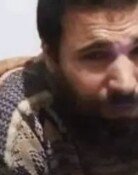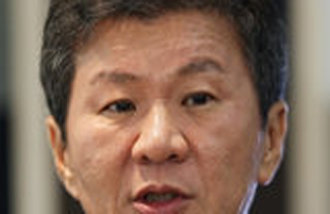Taking a Ride in Koreas New Attack Jet
Taking a Ride in Koreas New Attack Jet
Posted January. 13, 2006 05:19,
Gauge check complete, welcome aboard the A-50!
At the Agency for Defense Developments air force flight test center for the central fronts 20th Combat Wing yesterday morning, I heard that message loud and clear in my helmet speaker.
I was about to become the first civilian to ride in Koreas newest supersonic attack jet, the A-50.
As the plane exited the hangar and slid to the runway starting line, my heart was pounding, my hands were sweating, and I was gasping for breath.
A few seconds later, the 30,000 horsepower engine came to life with a loud, roaring bang and the 6.4-ton airplane thrust itself forward. In just two to three seconds, our speed reached 200 kilometers per hour, with the safety belt tight on my chest and my back fully pressed into the back of the cockpit. It was impossible to breathe, and it felt like a boulder was pushing down on my chest. The landscape kept changing on either side of me, but I couldnt even open my eyes.
Right when the plane seemed to take off into the clear sky, it started to slow down. Only when it came to a full stop and when Lt. Col. Lee Chung-hwan (43) turned around and raised his thumb and said, Congratulations on becoming one of our test-flight pilots, could I put myself at ease.
Although a flight did not occur, the capacity of the A-50 could be fully appreciated with a high taxi where a plane rolls down a runway at full engine power.
The A-50, modeled after the T-50 Korean supersonic trainer, successfully completed air-to-air missile tests last year, and recently completed air-to-ground missile tests.
On the day of my visit to the air force flight test center, the A-50 was loaded with four 500lb missiles for launch training at a nearby shooting range.
Presenting the exquisite qualities of the A-50, which completed its first flight on September 2003, to the world was only possible through the efforts of test-flight pilots such as Lee. Test-flight pilots play a large role in sanding the rough edges of newly developed models such as the T-50 and the A-50. Unlike other pilots in general, who fly performance-guaranteed aircraft, these pilots must ride test models and perform various dangerous and difficult maneuvers to evaluate aircraft performance.
Lt. Col. Chung Young-sik, the evaluation section chief of Test Evaluation Unit 52, said, The tension gets very high during test flights when we perform dangerous maneuvers, such as supersonic thrusts or switching the engine on and off.
Lee is one of the test flight crews oldest members. He received an ovation last year at the Seoul and Dubai Air Shows for performing top-level stunts, including reverse loops (a backwards 360 degree turn) with a T-50 and flying at very low speeds.
The glory is short and, for the most part, the crews daily schedules are tightly packed with flights, evaluations, and education sessions.
What makes them stay at their control levers is their desire and pride to perfect Koreas T-50 and A-50, aircraft that the country has spent about two trillion won over 13 years developing, and that can only be completed with the sweat and tears of people like them.
Sang-Ho Yun ysh1005@donga.com







